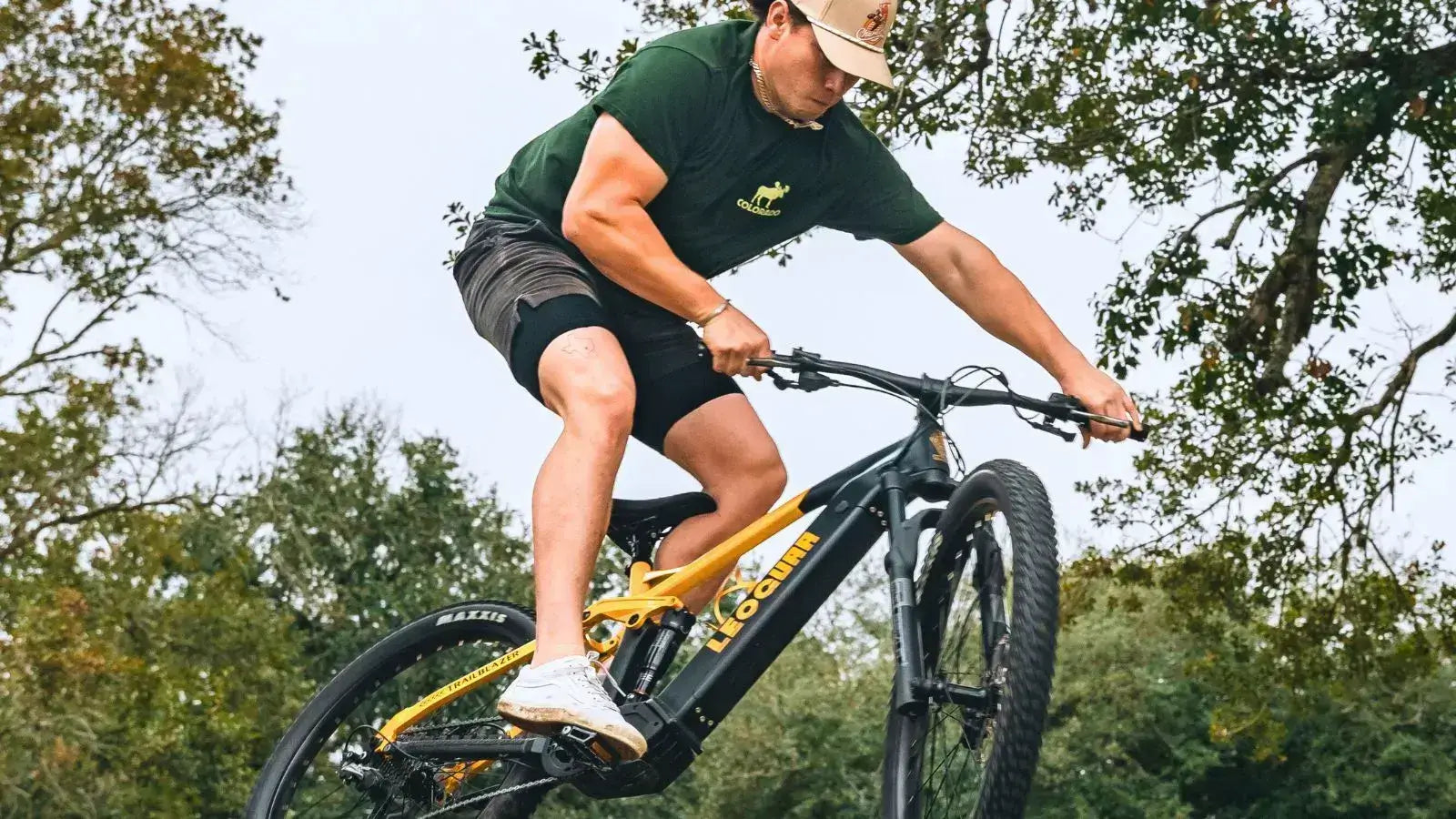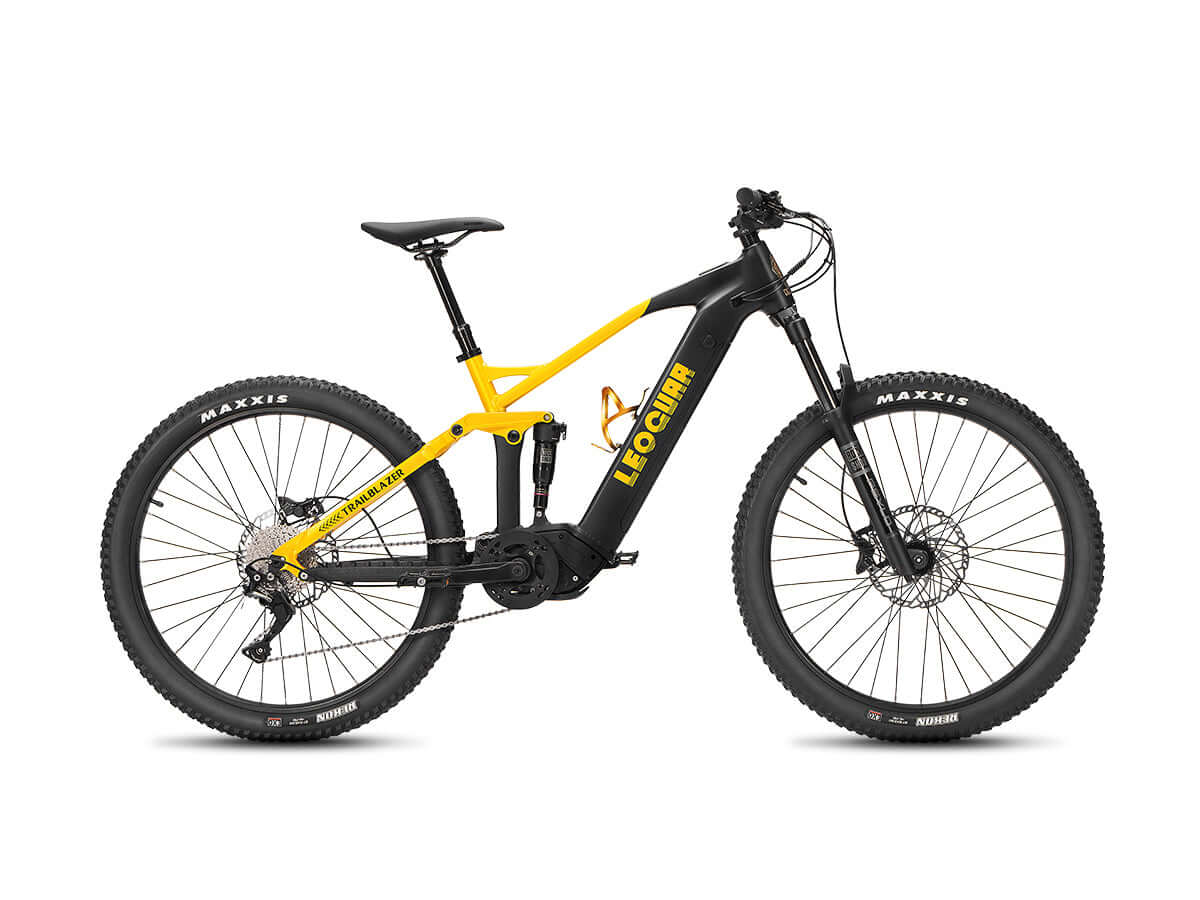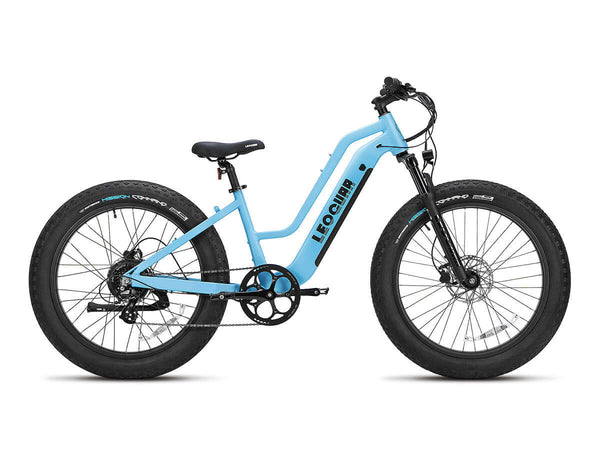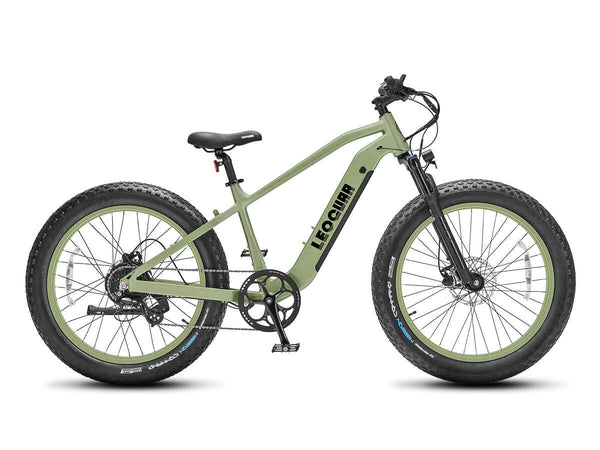
From Class 2 to Class 3: Should You Hack Your Ebike or Buy New?
You love your class 2 e bike. It has given you a new sense of freedom on city streets and bike paths, making every ride feel like an adventure. But lately, you've been feeling the 20 mph limit. You find yourself wanting to keep up with the flow of traffic or just open it up on a clear stretch of road without any restrictions. This leads to the big question: should you try to unlock your current bike for class 3 ebike speeds, or is it time to invest in a new, purpose-built model?
The temptation to save money with a quick hack is strong. But it's a decision with serious results that could affect your safety, your wallet, and your legal standing. We're here to provide a detailed breakdown of both paths, covering the important aspects of safety, legality, cost, and performance. Our goal is to arm you with the knowledge to make an informed and, most importantly, safe decision that you won't regret later.
Class 2 vs. Class 3 Explained
Before we dive into the hack vs. buy debate, it's important to understand the basic differences between these ebike categories. The ebike classification system isn't just about speed. It's a framework built for regulation and user safety, designed to keep riders and pedestrians safe while allowing reasonable freedom on roads and trails. This is a system that broadly designates ebikes to ensure they are used appropriately on roads and trails. Understanding these classes is the first step to following local e-bike safety guidelines and avoiding trouble with law enforcement.
Here's a clear breakdown:
| Feature | Class 2 Ebike | Class 3 Ebike |
|---|---|---|
| Top Assisted Speed | 20 mph (32 km/h) | 28 mph (45 km/h) |
| Throttle Functionality | Yes, up to 20 mph | Often no, or throttle is limited to 20 mph |
| Motor Assistance | Pedal-assist and throttle | Primarily pedal-assist |
| Primary Use Case | Casual riding, bike paths, leisurely commutes | Faster commuting, keeping pace with traffic |
A class 2 e bike offers both pedal-assist and a throttle, both of which cut off at 20 mph. A class 3 ebike provides pedal-assist up to 28 mph but often has a throttle that is either disabled or still limited to 20 mph, depending on state law and manufacturer design choices.
The Hack Path Explained
When we talk about hacking or unlocking a class 2 e bike, we're referring to overriding the manufacturer's pre-set speed governor. This limit is put in place via software to ensure the bike complies with class 2 regulations and safety standards. It's a common industry practice for manufacturers to use a motor that is physically capable of higher speeds across multiple models, then use software to define its classification and keep it within legal limits. This has led to a subculture of riders seeking ways to unleash that untapped potential, often without fully understanding the risks involved.
The methods for unlocking vary, but they generally fall into three categories:
- Software Unlocking: This is the most common method on modern ebikes with digital displays and companion apps. It can involve accessing hidden service menus or using third-party software to change the speed limit parameter, sometimes requiring special cables or dongles.
- Secret Menu Codes: Some older or simpler models have built-in codes that manufacturers use for testing and setup. By pressing a specific sequence of buttons on the handlebar display, a rider can enter a configuration menu and adjust the top speed without any additional tools.
- Hardware Modification: This is the most invasive and riskiest method that should be avoided at all costs. It can involve replacing the bike's controller with a more powerful, unrestricted one, or tricking the speed sensor by changing settings for wheel circumference. We strongly advise against any of these physical modifications, as they introduce a host of new, unpredictable failure points that could leave you stranded or worse.
The Dangers of Hacking
While unlocking your bike might seem like a free performance upgrade, it comes with a long list of unseen risks that go far beyond just voiding your warranty. As mechanics and industry experts, we see the consequences of these modifications on a regular basis, and they are not worth the extra few miles per hour you might gain.
Mechanical and Safety Risks
A class 2 e bike is an integrated system where every component is chosen to work safely up to 20 mph. Pushing it to 28 mph represents a 40% increase in speed that stresses these components beyond their design limits in ways that aren't immediately obvious but can be catastrophic. The engineering tolerances that keep you safe at 20 mph simply don't apply at higher speeds, creating a dangerous situation that gets worse over time.
Braking Systems: The brakes on your class 2 e bike are specified for its weight and a top speed of 20 mph, with safety margins built around those parameters. At 28 mph, the kinetic energy of you and your bike is nearly doubled, meaning your stopping distance increases dramatically and your brakes have to work much harder. More critically, the sustained heat generated from braking at higher speeds can cause catastrophic brake fade, a condition where your brakes lose effectiveness when you need them most. We've experienced it firsthand on long descents: you pull the brake lever, but the lever feels spongy and the bike barely slows down. It's a terrifying loss of control that can happen without warning and leave you unable to stop safely.
Frame and Fork Integrity: The frame, fork, and welds on a class 2 e bike are not necessarily engineered to handle the sustained vibrations and forces of traveling at nearly 30 mph. Hitting a pothole at that speed puts immense stress on the headtube and fork, increasing the risk of component failure that could send you over the handlebars. The additional stress also accelerates wear on bearings, joints, and connection points throughout the bike.
Motor and Battery Overload: Forcing the motor to operate at higher RPMs and the battery to discharge at a higher rate generates excessive heat that these components weren't designed to handle. This will drastically reduce the lifespan of both your motor and battery, potentially cutting their useful life in half or worse. In a worst-case scenario, pushing a battery beyond its designed discharge rate can lead to thermal runaway, creating a significant fire risk that could destroy your bike and endanger your safety.
Legal and Financial Risks
The mechanical dangers are significant, but the legal and financial fallout can be just as severe and much more immediate. These consequences can affect your life long after you've forgotten about the extra speed, making the short-term thrill definitely not worth the long-term problems.
Voided Warranty: This is the most immediate and certain consequence that happens the moment you make any modifications. The moment you modify your bike's firmware, you give the manufacturer grounds to deny any warranty claim, even for a part that seems completely unrelated to the hack. A failed motor or a cracked frame will be your financial responsibility, potentially costing thousands of dollars to repair or replace.
Legal Non-Compliance: Your modified bike is no longer a legal class 2 e bike in the eyes of the law. In the eyes of the law in many jurisdictions, it is now an unregistered and uninsured motor vehicle that doesn't belong on bike paths or roads without proper licensing. This can lead to hefty fines, confiscation of your bike, and even a suspended driver's license depending on local laws and how seriously authorities take the violation.
Loss of Access: The ebike classification system exists to regulate trail and path usage, giving cyclists access to areas where motorcycles and cars aren't allowed. By de-classifying your bike, you immediately lose legal access to bike trails and multi-use paths that are designated for class 1 and class 2 ebikes. This could eliminate many of your favorite riding spots and force you onto busy roads where you're less safe and less welcome.
Insurance and Liability: This is perhaps the most overlooked risk that could have devastating financial consequences for you and your family. If you are involved in an accident on your hacked ebike, your homeowner's or renter's insurance will likely deny any claim because you were operating an illegally modified vehicle. You could be held personally and financially liable for any property damage or, far worse, any injuries you cause to others. The potential cost is astronomical and could include medical bills, lost wages, pain and suffering, and legal fees that could bankrupt you.
The Buy New Path
Opting for a purpose-built class 3 ebike is what we call the engineered solution that prioritizes safety and performance. You aren't just paying for a higher top speed; you are investing in a complete system designed from the ground up for that performance, with the safety, reliability, and peace of mind that comes with professional engineering and testing. Every component has been selected and tested to work together safely at higher speeds.
Designed for Performance
Every component on a true class 3 ebike is selected and tested to handle the demands of 28 mph travel safely and reliably. The manufacturers have done the engineering work to ensure that all systems work together harmoniously, giving you a bike that performs as intended without compromising safety or durability.
Superior Components: Class 3 models are built with stronger, more robust frames that can handle the additional stresses of higher-speed riding. They almost universally feature more powerful hydraulic disc brakes with larger rotors to manage heat and provide the necessary stopping power when you need it most. Tires are also typically higher quality and rated for higher speeds, with better puncture resistance and improved grip for safer cornering and braking.
Integrated Systems: The motor, battery, and controller are all tuned by the manufacturer to work in perfect harmony at higher speeds. This ensures you get efficient power delivery, predictable range, and long-term durability without the risk of overheating or premature wear that comes with pushing components beyond their limits. A key feature to look for is UL 2849 certification for the entire electronic system, which is a rigorous safety standard that tests against electrical and fire hazards. This certification is a hallmark of reputable brands that take safety seriously and invest in proper testing and quality control.
Guaranteed Legality
Beyond the hardware improvements, buying a factory class 3 ebike eliminates the legal and financial risks of a hacked bike. You get all the benefits of higher speed without any of the downsides that come with unauthorized modifications, allowing you to ride with confidence and peace of mind.
Full Warranty Coverage: Your entire investment is protected by the manufacturer's warranty, giving you recourse if anything goes wrong. If a component fails, you have the full backing of the manufacturer's warranty, giving you peace of mind and protecting your investment for years to come.
Legal Compliance: The bike is sold as a legal class 3 ebike and includes a factory-installed speedometer, which is required by law for this class. You can ride with confidence, knowing you are compliant with regulations for on-road use and won't face legal problems or fines from law enforcement.
Resale Value: A well-maintained, factory-spec class 3 ebike from a reputable brand will hold its value far better than a modified class 2 bike. A modified bike will be a red flag for any knowledgeable buyer who understands the risks and potential problems that come with unauthorized modifications.
The Switchable Ebike Option
In recent years, a third option has emerged that offers a best of both worlds solution: the switchable ebike. Many leading manufacturers now design their bikes to be flexible, shipping them as compliant class 2 ebikes but including the built-in capability to be switched to class 3 when appropriate. This represents the cutting edge of ebike design and regulation compliance.
This is not an unauthorized hack but rather a manufacturer-designed feature that maintains safety and warranty coverage. For example, some popular models allow a user to acknowledge a safety and liability waiver in the official app, and the bike can alter its maximum speed up to 28 mph via pedal assist while keeping all safety systems intact. The throttle often remains capped at 20 mph to maintain compliance in certain regions where throttle restrictions apply. This is possible because the manufacturer has already built the bike with the necessary components—stronger brakes, a robust frame, and a UL-certified system—to handle both speeds safely.
-
Pros: Flexibility to use class 2 mode for bike paths and class 3 for on-road commuting gives you the best of both worlds. Your warranty is maintained because this is a factory-designed feature, not a hack. The components are engineered for safety at both speeds, so you don't compromise reliability or durability.
-
Cons: The rider is responsible for using the correct mode in the correct location, which requires knowledge of local laws and trail regulations. Improper use can still lead to legal issues if you use class 3 mode in areas where it's not permitted.

The Final Verdict
So, what is the right choice for you based on your priorities and circumstances? Let's summarize the options based on different priorities to help you make the best decision for your specific situation and needs.
-
If your top priority is saving money above all else: Hacking is the cheapest route upfront, but the math changes quickly when you consider potential costs. As we've detailed, the potential costs in safety, legal, and mechanical failures are immense and could far exceed the cost of a new bike. We cannot recommend this path to anyone who values their safety and financial security.
-
If your top priority is safety, legality, and performance: Buying a new, purpose-built class 3 ebike is the undisputed best choice for riders who want the best possible experience. It's an engineered system that provides peace of mind and reliable performance while protecting your investment and keeping you on the right side of the law.
-
If your top priority is flexibility and future-proofing: A manufacturer-designed switchable ebike is the perfect compromise for riders who want options. It gives you the legal access of a class 2 bike and the speed of a class 3 bike in one safe, warrantied package that adapts to your needs.
Ultimately, the desire for more speed is understandable, but it should never come at the expense of safety or legal compliance. For the vast majority of riders, the smart, sustainable, and safe choice is to either invest in a true class 3 ebike model or seek out one of the excellent switchable ebikes on the market today. Your safety, and the safety of those around you, is worth the investment in proper equipment that's designed to keep you safe at higher speeds.
Frequently Asked Questions
1. Q: Will hacking my class 2 e bike void my warranty?
A: Yes, any unauthorized modification to your bike's software or hardware will immediately void your warranty. Manufacturers can detect these changes and will refuse warranty claims even for unrelated parts that fail later.
2. Q: Can I get in legal trouble for riding a hacked ebike?
A: Yes, a modified class 2 e bike may be considered an unregistered motor vehicle in many areas. This can result in fines, bike confiscation, and even license suspension depending on local laws.
3. Q: Is it safe to ride a hacked class 2 e bike at class 3 speeds?
A: No, class 2 e bikes are not engineered for sustained speeds of 28 mph. The brakes, frame, and other components may fail under the increased stress, creating serious safety risks.
4. Q: What's the difference between hacking a bike and buying a switchable ebike?
A: Switchable ebikes are designed by manufacturers with proper components for both speeds and maintain warranty coverage. Hacking involves unauthorized modifications that void warranties and create safety risks.
5. Q: How much more does a class 3 ebike cost compared to a class 2?
A: Class 3 ebikes typically cost 200 to 800 dollars more than comparable class 2 models, but this includes better brakes, stronger frames, and components designed for higher speeds, making it a worthwhile investment for safety and performance.











































Leave a comment